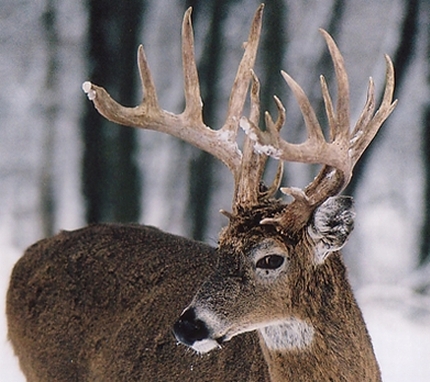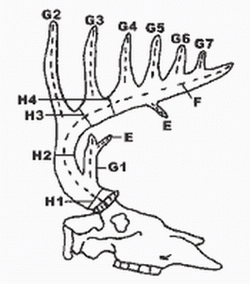Throughout the previous parts of this series on how to score white-tailed deer using the Boone & Crockett method we have gone over scoring terminolgy and have examined all the factors that impact gross and net scores, in addition to classifying typical and nontypical white-tailed deer antlers. By this point, you know that the widest inside spread between beams, beam lengths, circumferences, and point (tine) lengths all add together to give a gross B&C score. We also discussed how deductions are calculated and how this impacts net score.
Now at this point, I’m going to tell you exactly how to take the main beam measurements as well as mass (circumference) measurements. First, make sure you have the proper scoring equipment, then take the the right beam length by measuring from the bottom of the burr to the very tip of the beam (see diagram below). Repeat this process on the left beam. Record these measurements to the nearest eighth and beam measurements are completed.

Now, let’s discuss taking mass measurements. There are always 4 mass measurements taken on each the left and the right antlers. The H1 measurement is the smallest circumference between the burr and the G1. Check the circumference at several locations between the burr and base of the G1 and record the smallest circumference.
The H2 measurement is the smallest circumference between the G1 and G2. The H3 measurement is the smallest circumference between the G2 and G3. The H4 measurement is the smallest circumference between the G3 and G4. If the antlers you are scoring are from a typical 10-point (or more) rack, the measurements are simple to take.

However, if you are scoring an 8-point rack, there is no G4! In this case, the H4 measurement must be taken from half-way between the G3 and the tip of the main. Simply measure the main beam from the center of the G3 to the tip of the beam, divide by 2, and mark the beam this distance from the end. Take your H4 circumference and your mass measurements for that side are completed.
Keep in mind that on a 9-point rack with 4 normal points on one side and 5 normal points on the other, the H4 on one side will be taken between the G3 and G4, but the H4 on the other side will be taken between the G3 and the tip of the beam. With an unmatched (unpaired) point, a sizeable deduction will likely be evident between the right H4 and left H4 (the G4 will be deducted from the net score as well). As I mentioned earlier, symmetry is good and asymmetry is bad when it comes to Boone and Crockett scores and white-tailed deer.



